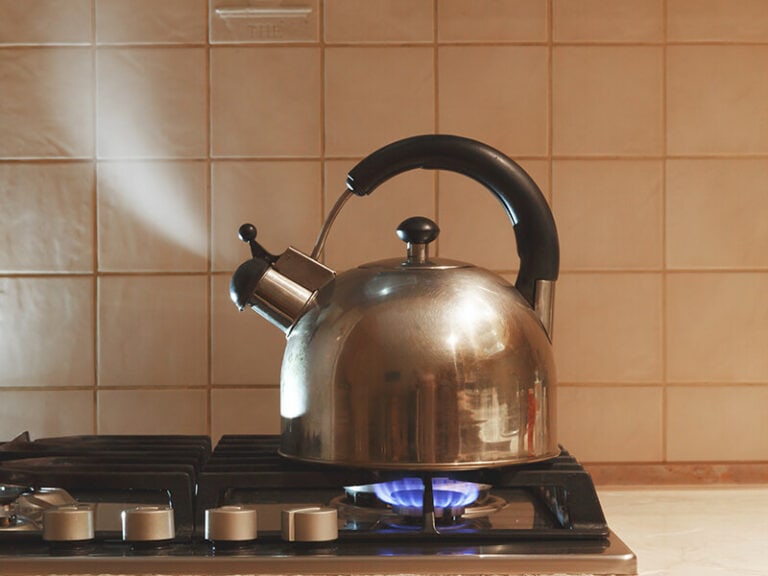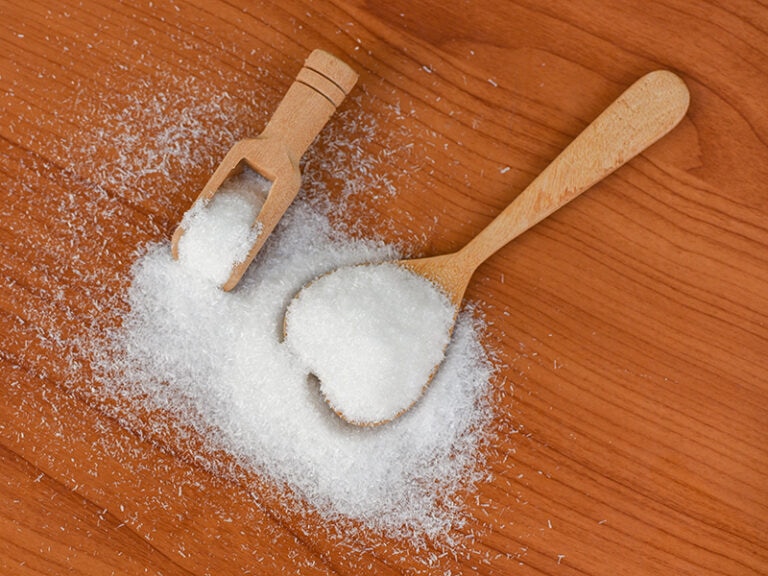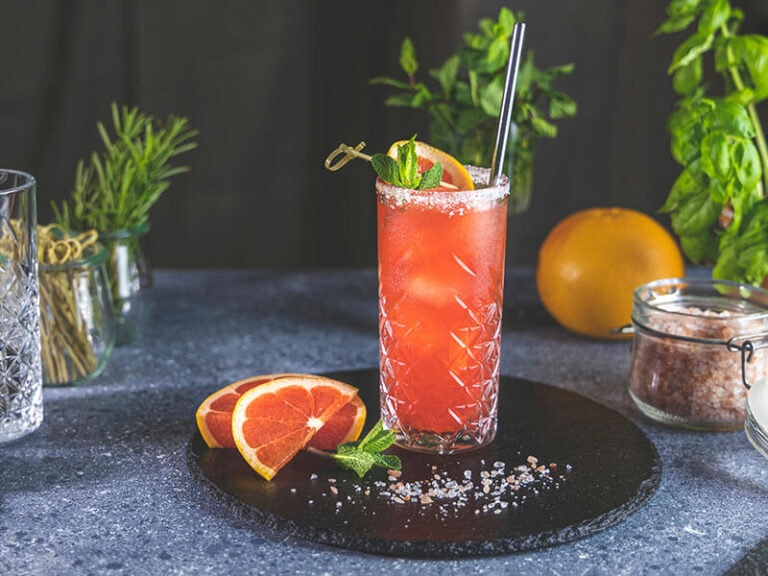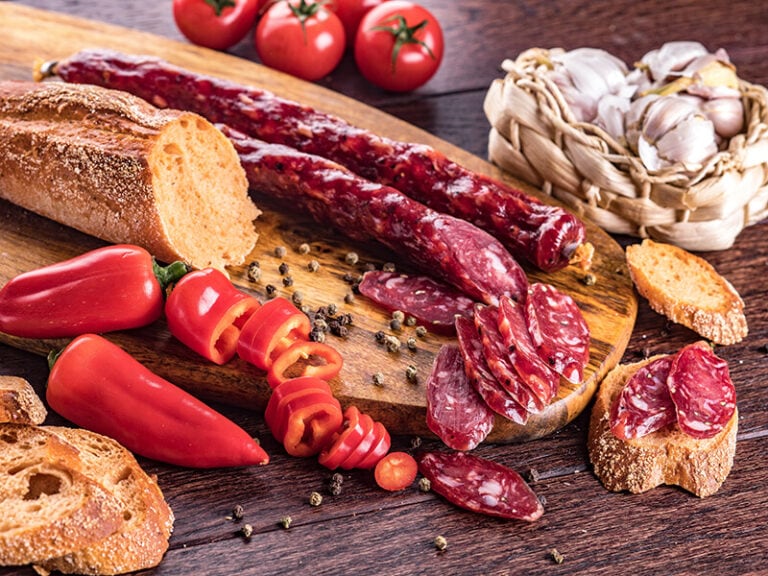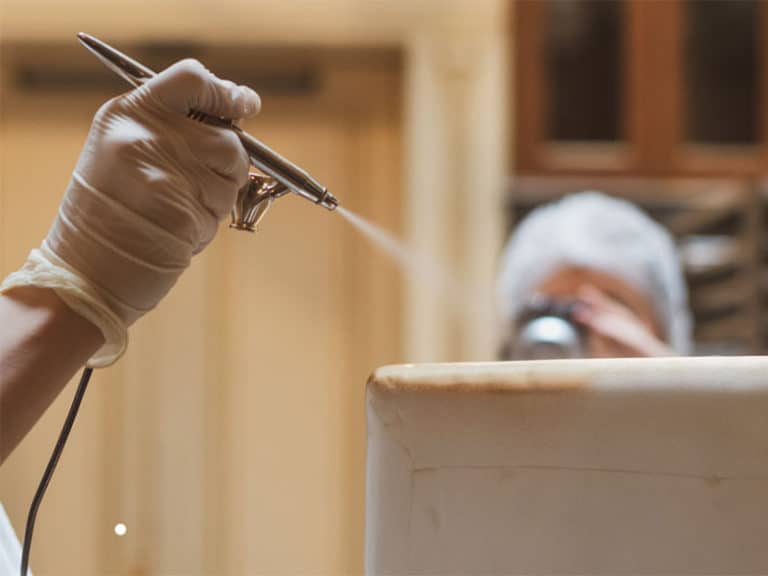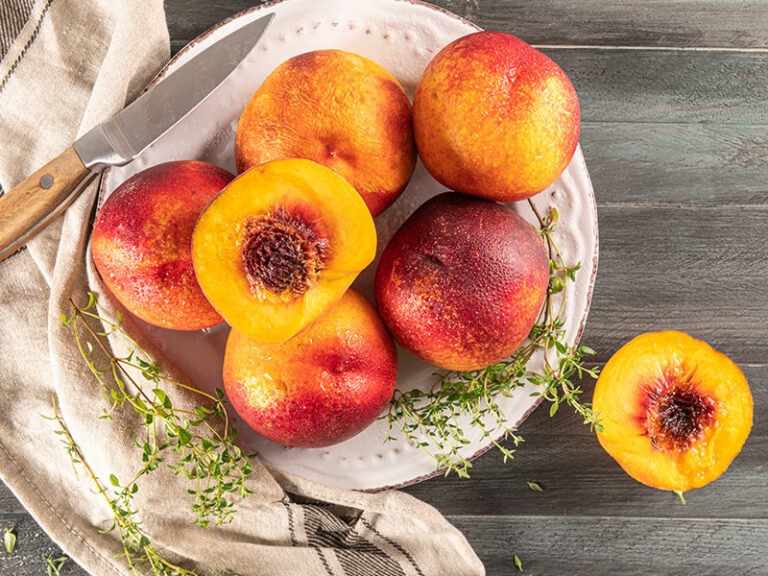“Does food coloring expire?” is a common topic in baking, especially among new bakers. So, do you have a correct answer? Or, are you still wondering if your food coloring bottle past its expiration date is still usable?
Don’t worry! In this post, I’ll address your concerns about whether food coloring expires, how to store them properly, and some ways to make homemade food coloring. With that said, you will be much more confident when dealing with food coloring!
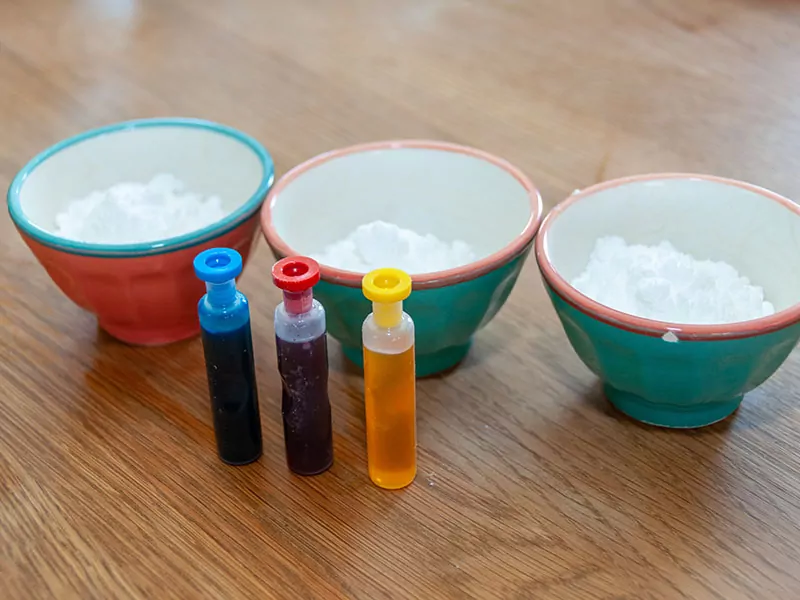
An Overview Of Food Coloring
I’m sure you are no longer unfamiliar with food coloring, right? So let’s just review some basic information about these magic additives.
What Is Food Coloring?
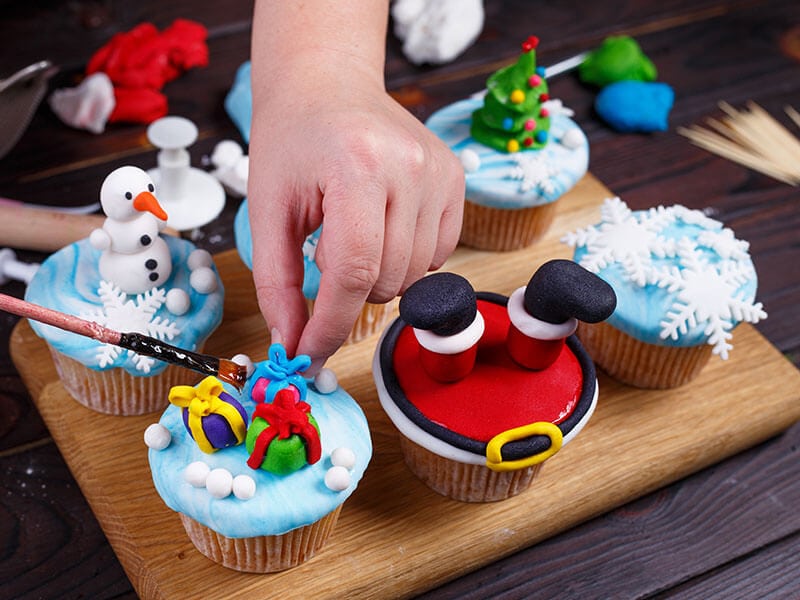
Food coloring is edible dyes used in dishes and cakes to impart desired colors. Nowadays, it is important to make dishes more appealing and appetizing. It’s also an “indispensable aide” of any baker, both for commercial and domestic purposes.
There are many types of food coloring on the market: liquids, gels, powders, pastes, and natural food coloring. Choosing what types depends on what dishes or cakes you are making.
Why Should You Use Food Coloring?
Food coloring undeniably offers many benefits, such as enhancing your products’ colors and making them more attractive and commercially recognized.
Make Your Dishes More Appealing
Color is an inseparable part of any food, and people always prefer eye-catching dishes. With food coloring, you can ensure that your dishes are colorful and appetizing.
Balance The Color Loss
While you cook, your dishes get exposed to high temperatures, light, air, and moisture that can lead to color loss. Fortunately, food coloring is here to solve this problem. Applying color additives balances this color loss and makes your dish lively.
Recognize Your Products
In commercial production, food coloring acts as a guide to quality, contributing to your products’ mass recognition. No one would buy poor-colored cupcakes that look so normal, right?
When Does Food Dye Expire? Here Are The Answers!
Although there is usually an expiration date printed on each bottle of food dye, can you still use it after that date? Before I tell you the answer for each type of food coloring, look at my summary table here.
Liquid Food Dyes
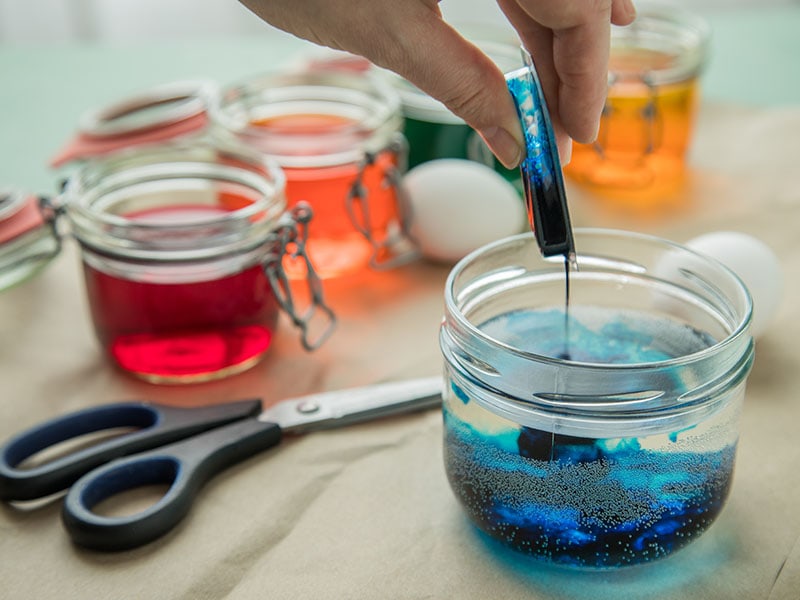
One of the most common food dyes is liquid food dyes. They are easy for beginners to use in frosting, icing, batters, and dough.
All liquid food coloring ingredients are synthetic, so they are not spoiled. This means liquid dyes will never expire, given they are in proper storage.
However, you should use liquid food coloring within 6 months of opening it because, after that period, the colors may lose their strength due to exposure to air and light.
Besides, liquid food coloring contains water, so if you don’t seal it tightly, it will thicken and harden gradually. When you notice this, you can drop a little hot water into the container and shake it to soften the color dyes inside.
Gel Food Dyes
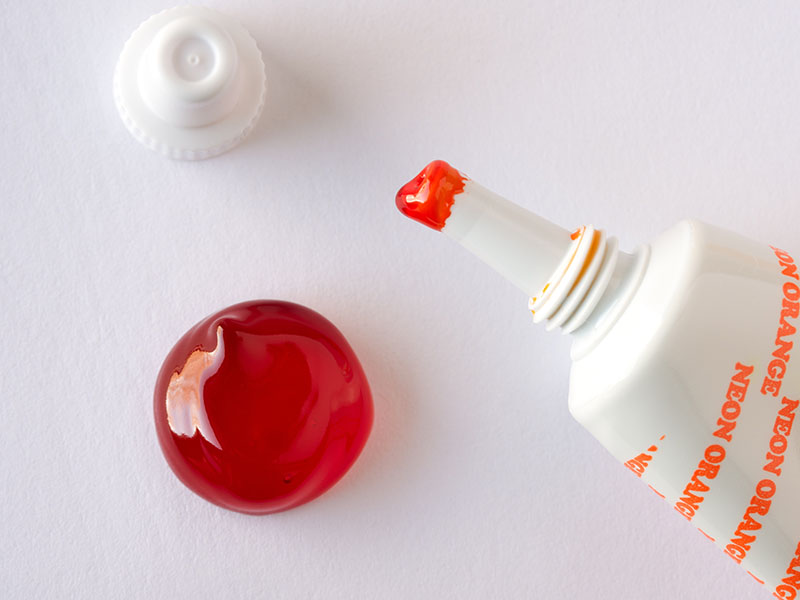
Gel food coloring combines water, glycerine or syrup, and thickener. Pastry chefs prefer this type to make fondant, frosting, icing, cupcakes, and candy.
Similar to liquid dyes, there are no ingredients that can turn rancid, and gel dyes can last infinitely, too.
Nevertheless, the ideal time for using gel food coloring is within 3 months after you open the container. These gels are sensitive to light, heat, and air, making your gel food coloring thicken and harden after some time.
You can also apply what you do to soften liquid dyes into gel dyes. If they are dried out, you had better grab a new one because using them may lead to uneven colors because the colors begin to fade due to oxidation.
Powdered Food Dyes
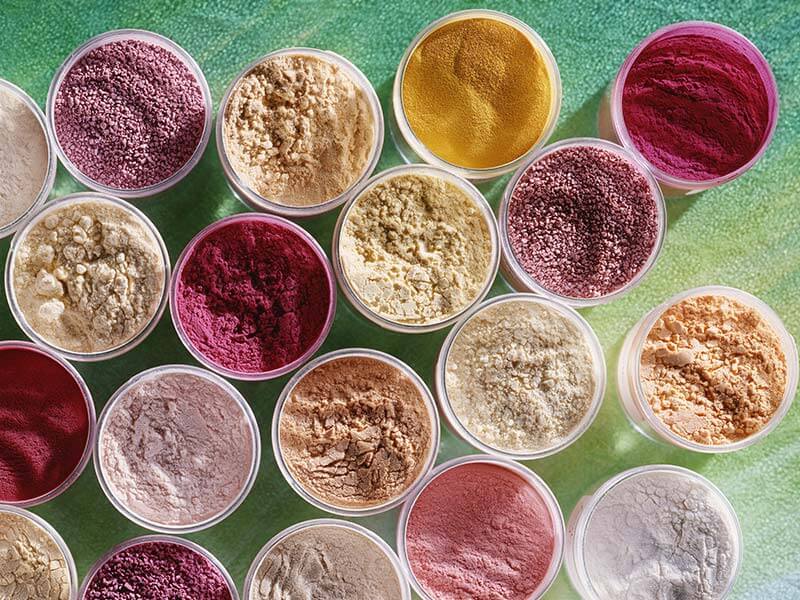
In the form of 100% powder, powdered food dyes are suitable for food that can’t be mixed with water, such as chocolate or macarons.
Besides, you can sprinkle some powdered food dyes into a bowl of lemon extract or drinkable alcohol to create a food paint. After that, use a food-grade brush to take the mixture and color the food.
Interestingly, it contains no liquid to harden or dry out, meaning it can last forever in your pantry. Nonetheless, like other types, it also works best during the first 6 months after opening.
Powder food dyes should be away from contamination because mold and spores may grow when some strange substances come into the powder.
Paste Food Dye
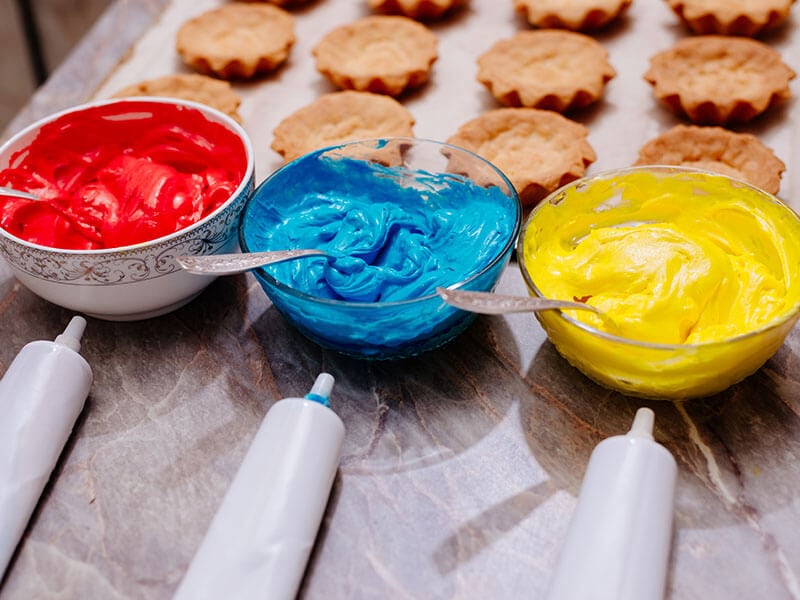
Paste dyes are very dense food coloring used by bakers to dye batters in large amounts to produce dark colors. You can also use paste dyes in frosting, candy, and cookie dough.
Not surprisingly, paste dyes don’t expire. Especially, light and air can not influence the quality of paste food coloring. Having said that, manufacturers of paste food dyes put a “best by” date for their products, and it’s usually 2 years since the manufacturing date.
Paste dyes contain water in their components, so you can add a few drops of hot water when it indicates a sign of drying.
Natural Food Dyes
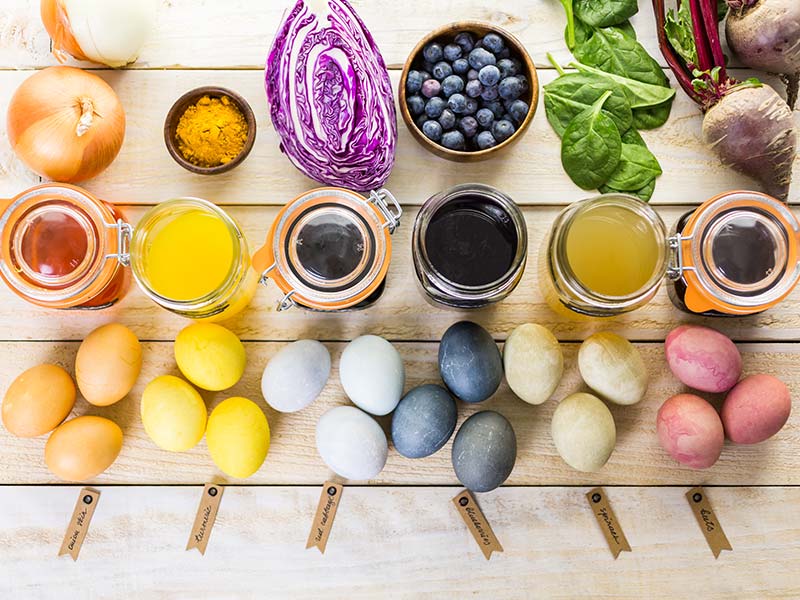
Natural food dyes or homemade food dyes are something you can buy or even prepare by yourself at home with simple natural ingredients. Some of them are strawberries for pink, beets for red, carrots for orange, turmeric for yellow, etc.
Unlike synthetic food coloring, natural dyes are food-based, so they will spoil and go rancid. It’s advisable to store natural dyes in air-tight containers and put them in the fridge. Doing this allows you to store your homemade food coloring for roughly two weeks.
The next time you use them, remember to take a peek to see if there are any spoilage signs, such as noticeable changes in colors, texture, and smell.
Get to know better about some types of food coloring and their uses.
Stop Using Food Coloring When You Notice These Signs!
Now you know about the expiration date of fool coloring, but that’s not everything! You should remember that food dye can be rotten or spoiled even before its expiration. So, please throw your food coloring away if you notice the following signs.
Complete Texture Change
A significant change in texture may indicate that your food coloring has lost its original quality and become unsafe to use. The changes in the texture vary from type to type. For instance, the liquid form will become thicker and drier, while the gel form will be harder over time.
Changed Color
A complete color change of food dyes also affects their final results if you insist on using them. They may lead to uneven colors when applied to frosting or icing. I’m sure you don’t want to ruin your cakes just because of these old food dyes.
The Appearance Of Mold
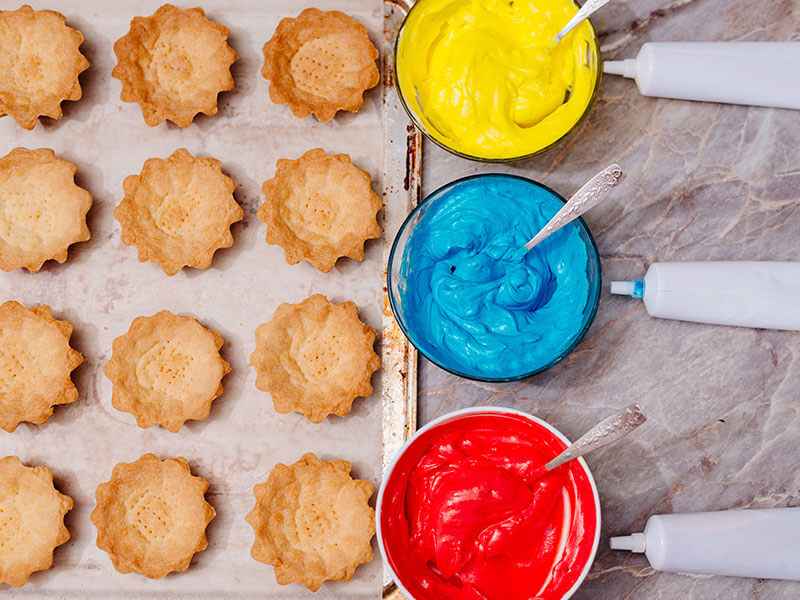
Last but not least, you must stop using moldy food coloring immediately. Mold growth may be because you didn’t use clean utensils or clean the lid and rim of the container after use. Strange substances fall into the bottle at that time, and mold grows.
Consuming moldy food coloring is not good for your health. Besides the undesirable taste and white spots, mold can release Mycotoxins, a harmful toxin that can make you sick or even dead if consumed too much. (1)
Why Is There An Expiration Date For Food Coloring?
You may wonder why there is an expiration date labeled on food coloring bottles while food coloring doesn’t expire. There are some reasons behind this funny situation.
To Conform To The Law
In America and many other countries, every color additive manufacturer is responsible for legally stating an expiration date for each product. (2)
These regulations are even stricter when it comes to food or additives that people consume every day. That’s how to prevent consumers from consuming spoiled products.
Regardless of what types of food coloring and whether it will expire, every container usually has an expiration date to fulfill the regulations. Therefore, you know that although its colors and textures may slightly change, food coloring is still safe to consume.
This is also the case for other shelf-stable products like salt, sugar, and honey. They all have expiration dates, but they don’t expire.
To Manage Inventory
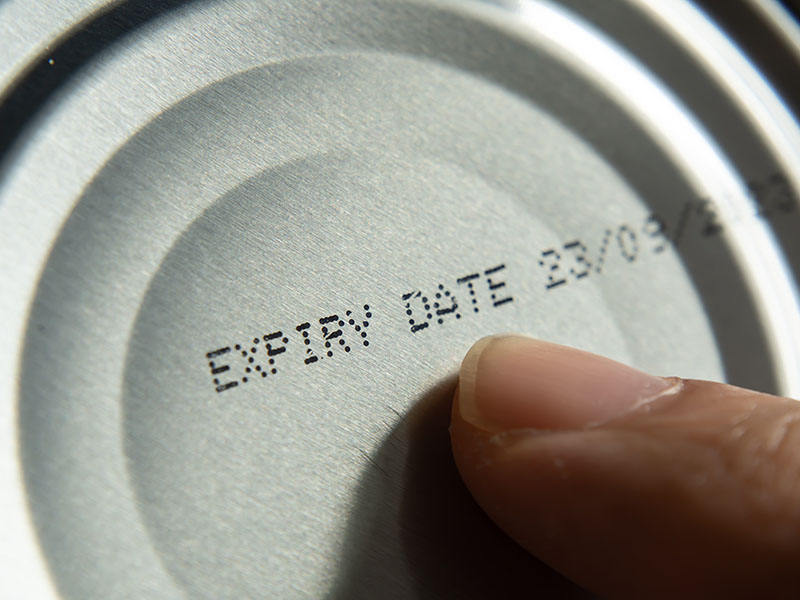
In addition to manufacturing dates, expiration dates help food coloring sellers manage their inventory effectively. They will know which batch they should sell first and which batch they can save for later sales.
What Do Food Coloring Manufacturers Say About The Expiration Dates?
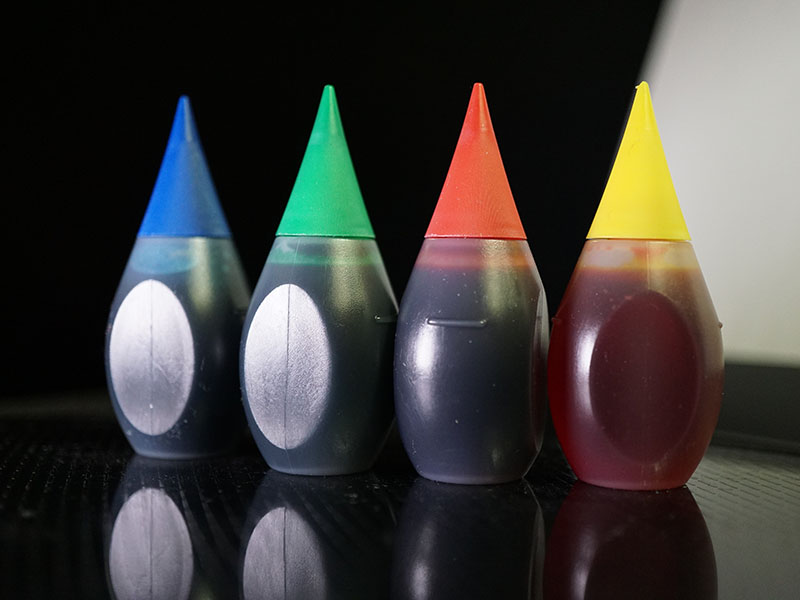
Many well-known food dye companies also talked about their expiration dates. Wilton and AmeriColor suggest that using their food dyes after the printed expiration date does not lead to any health hazards.
In the meantime, McCormick indicates that its 4-year expiration date shows its quality can deteriorate over time. Using the food coloring after that date is still not harmful.
Here’s How To Store Food Coloring Correctly
Well, you should remember that food dyes don’t expire only when they are in proper storage. Improper storage can surely affect food dyes’ quality and even spoil them in a short period.
I will show you how to preserve your food coloring for the longest time, and you won’t need to spend money on new food dyes whenever you make some cakes.
Avoid Direct Sunlight, Heat, And Air
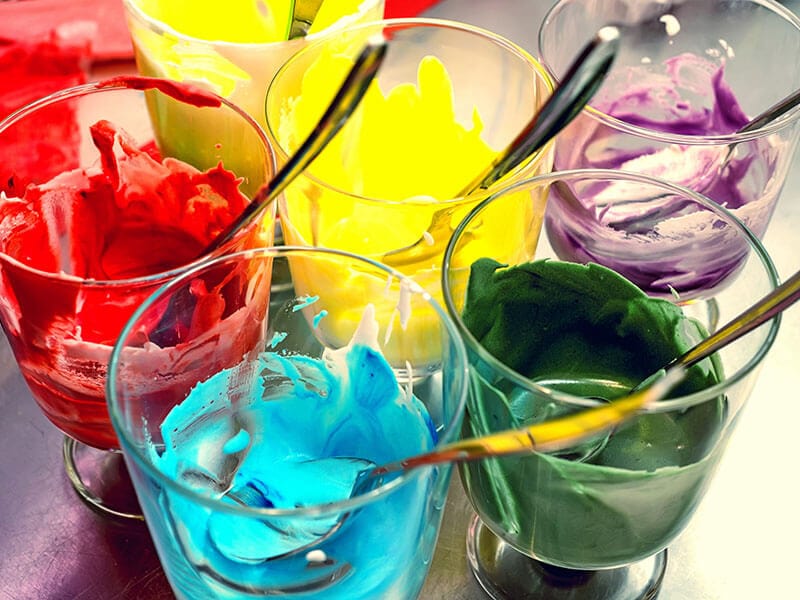
Sunlight, heat, and air can directly affect your food coloring via oxidation. You can easily notice a hardened texture and faded colors during this process.
First, remember to keep your food coloring away from these sources. In other words, you should store your food coloring containers in a cool, dark place. You also don’t want to put the food coloring near your ovens or stoves because of the heat they generate.
To prevent the air from spoiling your food coloring, you should maintain it in an air-tight container. Remember to seal your food dyes immediately after use so that it has little time exposed to the air.
Another handy tip is that synthetic food dyes are shelf-stable products, so we can safely store them at room temperature (65-85°F or 18-29°C).
Wipe The Lid And Rim
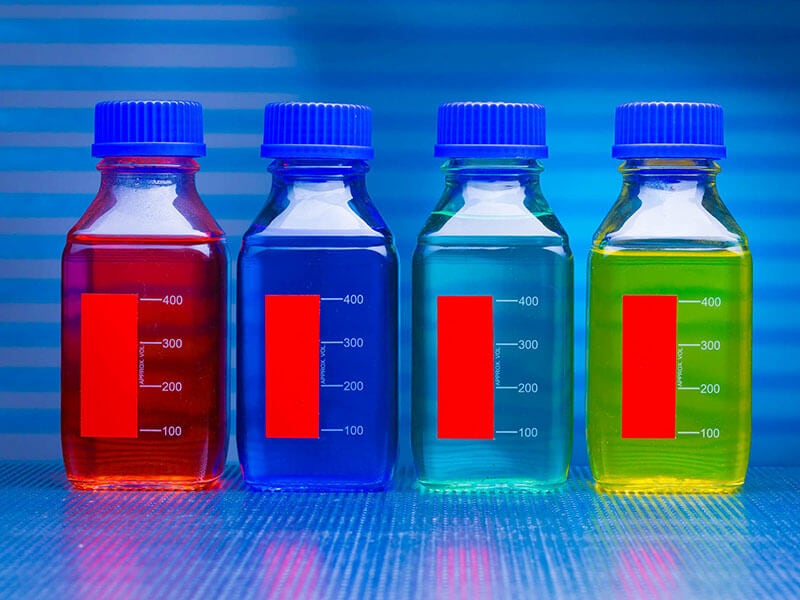
The second thing you must remember is to wipe the lid and rim right after use. Believe it or not, this step is vital to protecting your food dyes.
When you take out some color dyes, there will probably be small amounts still on the lid or rim. This amount will dry very quickly and afterward make it hard for you to seal the container tightly. Cleaning the lid and rim also prevents bacteria growth on the rim.
Use Clean Utensils
You should use clean utensils whenever you want to scoop some food coloring from the containers. Otherwise, strange substances may accidentally fall into the food coloring. It’s a great chance for mold to grow.
Besides, don’t let the mouth of the containers touch your dishes or anything else because this is another channel for bacteria to come into your food coloring.
Store Natural Food Coloring In Your Refrigerator
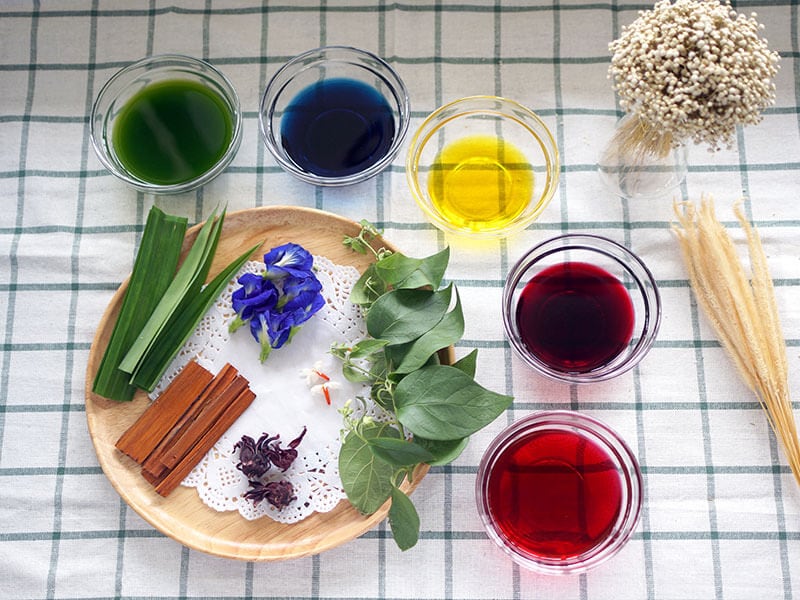
Since natural or homemade color dyes are food-based, they can spoil. Storing them in your refrigerator is necessary to preserve them for up to two weeks. Also, remember to keep the containers air-tight all the time.
Should You Use Expired Food Coloring? Is It Safe?
The answer is clear: you can use food dyes past the expiration dates. Except for natural food coloring, the others are made from synthetic ingredients, meaning there are no ingredients that can spoil.
In this case, the expiration date is just a way to fulfill the law, so it has nothing to do with the food coloring’s edibility. It would be a waste to throw away your food dyes because they are out-of-date. These expired food coloring does not pose any health risks.
However, old food coloring may disappoint you with unwanted results, such as uneven colors when you apply them to frosting or batters.
Suppose you are still unconfident about consuming old food colorings. In that case, you can use them for those parts you will not eat, for example, small decorations on a birthday cake.
Do you know how to create the black color from gel food dyes?
Making Homemade Food Coloring: Why Not?
Sometimes you want to make some homemade food coloring and enjoy the process of making it. I’ve got you covered. Here are some ways to create natural food dyes at home. Give it a try, and the results may surprise you!
Step 1: Select Natural Sources For Your Food Coloring
Natural sources for homemade food coloring are so plentiful that you can easily prepare them. Natural food dyes can come from fruits, vegetables, coffee, tea, etc.
Each color can come from a distinctive source of natural ingredients. Here is a list for you to prepare according to your desired color.
Step 2: Pay Attention To Flavors
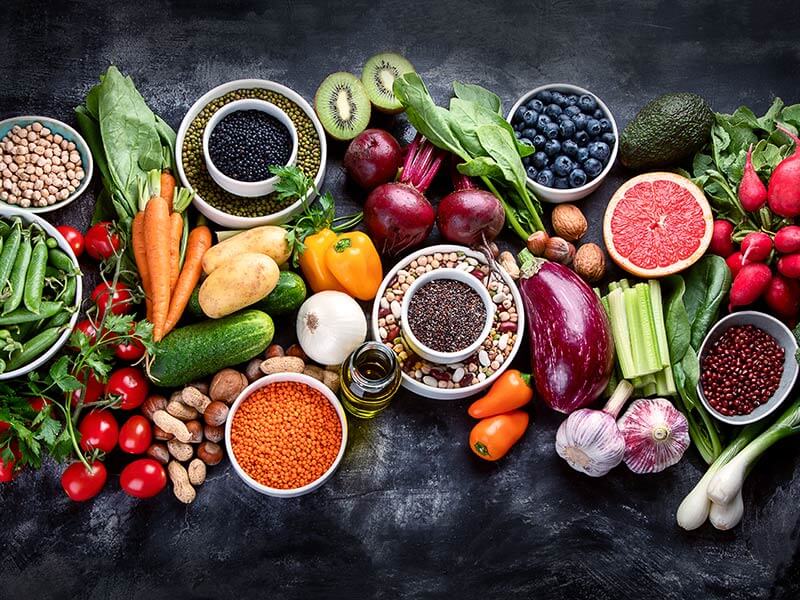
Because you are using natural food, there will be its flavors in the extracted food coloring. So, when you use these natural food dyes for icing or frosting, the final product will still have its flavors.
The strength of flavors depends on how much food coloring you use. The more you use, the stronger the flavors will be.
Food coloring with favors from fruits, coffee, or matcha is still okay because it usually appears in baking. However, for ingredients with strong flavors, such as squid ink or spinach, you have to consider if their flavors affect or even ruin your cakes.
Step 3: Choose Its Form (Liquid Vs. Powder)
In this step, you need to decide whether your natural food coloring is in liquid or powder form. If you want a food dye very quickly, go for the liquid one because it’s much easier to make from fresh fruits and vegetables. The liquid form is good for bright or pastel colors.
On the other hand, the powder form will need freeze-dried fruits or vegetables as ingredients. In powder form, it will offer you darker and more vibrant colors.
Make Liquid Natural Food Coloring
Liquid food coloring is easy to make when you have a juicer, while it may take more time if you don’t. But don’t worry! The steps are simple.
If you have a juicer, it’s so convenient! A juicer actually will get 90% of your work done. All you need to do is to use it to juice the chosen fruit or vegetables. The juicer will be useful in separating the grits, pulp, and any solid form from your juice.
Guess what? The juice can now be your natural food dye, and you can use it immediately.
Without a juicer, you can certainly extract homemade food dye. Here are the steps for you.
Step 1: Pour a cup of your chosen ingredients and a cup of water into a saucepan.
Step 2: Start boiling and then simmer it for 10 minutes. In the meantime, use a spoon to smash the ingredients into tiny pieces. Try to make the ingredients release as much color as possible.
Step 3: Keep simmering the mixture to a quarter of a cup.
Step 4: Blend the simmered mixture with a blender or food processor. Then sieve it with a colander or a fine-mesh sieve to get the most concentrated liquid.
Make homemade food coloring easily at home with simple steps.
Make Powder Natural Food Coloring
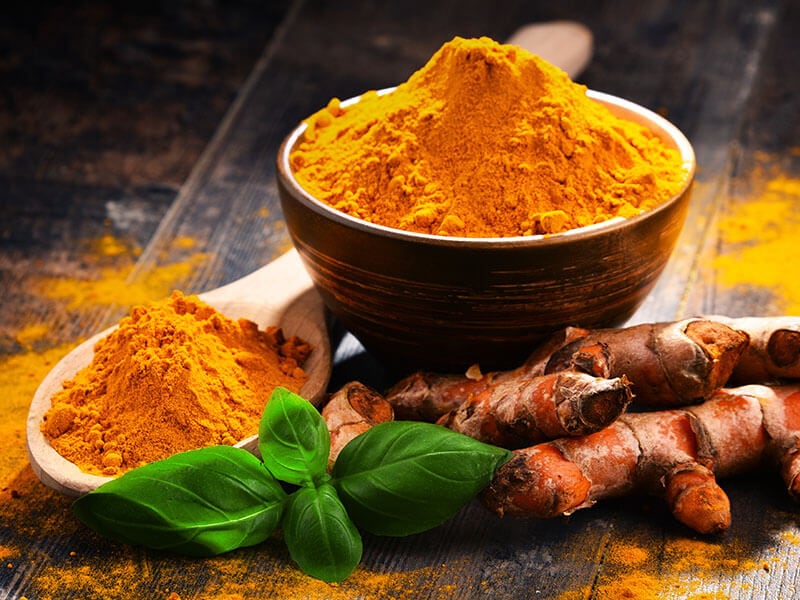
For powder food dye, the colors are more intense and vibrant. Interestingly, ground matcha, coffee, and cacao powder is already your finished natural powder coloring. To make powder coloring, just follow the steps below!
Step 1: Grab some freeze-dried fruits or vegetables from grocery stores.
Step 2: Grind them into pulverized powder with a food processor.
Step 3: Drip some drops of water into your powder until it is dissolved. The finished mixture is your powder food coloring.
FAQs
Deciding whether your food coloring is rancid is not difficult now. And here are some frequently asked questions about the expiration of some popular food coloring brands.
Carefully Examine Food Coloring Before Using
Although the expiration dates of food coloring are slightly insignificant compared to other food, you should pay attention to them and carefully examine your food dye’s color and texture to ensure it’s safe to use.
If there is a complete change in color and texture or mold growth, you should know what to do to protect your health. After all, I hope you will create meals that are not only eye-catching but also healthy.
Please share this handy post with those you think may be interested. Do you have any ideas about food coloring? Feel free to share them with other readers and me below! See you next time!
References
- Bennett, J.W. and Klich, M. (2003).
- Ecfr.gov. 2022. eCFR :: 21 CFR Part 70 — Color Additives.

